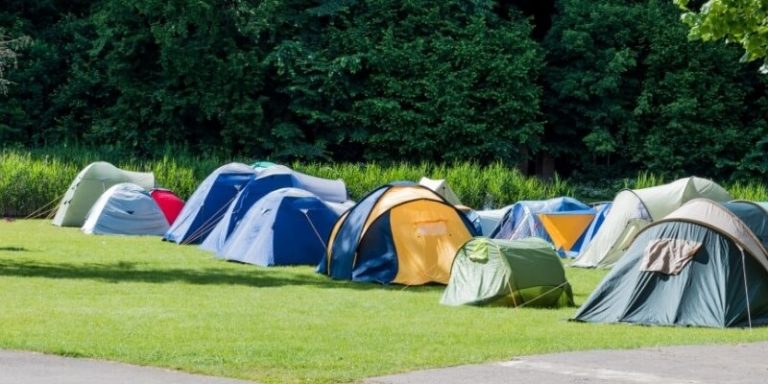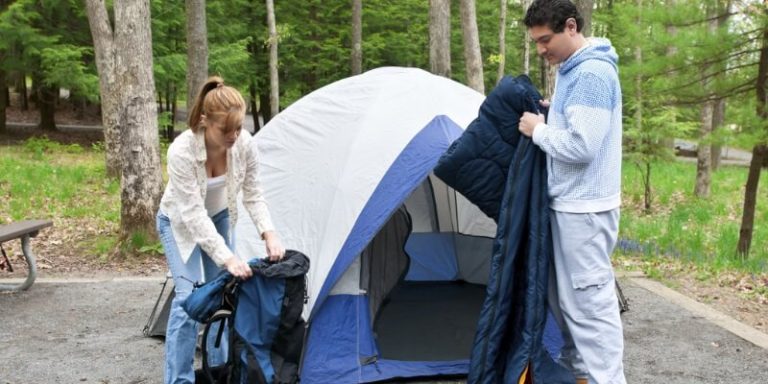How Long Does a Good Tent Last?
The longevity of a well-maintained tent is a topic of interest for outdoor enthusiasts and campers alike. Proper care and regular maintenance are crucial in determining how long a good tent lasts and ensuring it provides reliable shelter in the wilderness. This guide offers essential information about the average lifespan of tents and provides tips to help your tent last longer!
How Long Does a Good Tent Last
Light camping tents last around 100 to 300 days of use, while heavy-duty awnings can last anywhere from 300 to 1,500 days before needing replacement. Only the days when the tent is actually set up outdoors count towards this lifespan. On average, tents last between 1 to 5 years, but with proper care and maintenance, you can significantly extend that. In fact, a well-maintained tent can last up to 10 years!
When Does the Lifespan End?
Disaster often starts with a few small, seemingly harmless puddles of water on the tent floor. If you ignore these warning signs, the next storm could fill your tent with water, rendering it uninhabitable.
In the best-case scenario, a simple repair kit can reseal the tent and get it back in action. But as many campers know, there comes a time when a tent becomes too worn out for repairs. Wind, sand, improper storage, and especially UV radiation from the sun all take their toll on the tent over time.
A broken tent pole is often easy to fix, but eventually, the tent fabric becomes so faded and brittle that it feels like paper and can tear when you close a zipper. Sometimes, the fabric’s coating even starts to peel. At this point, no seam sealer or waterproofing treatment will save it.
The Lifespan of Different Tents
The lifespan of a tent depends on several factors, including the material, quality of workmanship, location, and how well it’s cared for. That’s why I’ve outlined specific timeframes for how long a tent typically lasts in practice.
Polyester Tents
Polyester (PES) is often considered the “jack-of-all-trades” among tent materials. It’s affordable and easy to care for, which is why you’ll find it in various types of tents. In fact, it’s common to see that practically every budget-friendly tent is made from polyester.
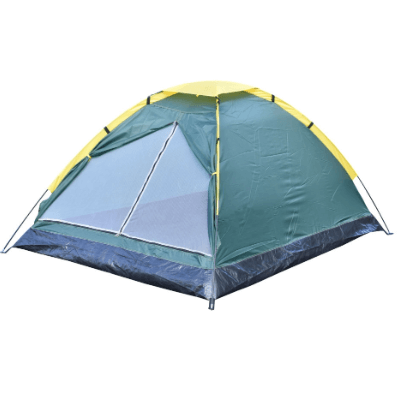
- Light Camping Tents: Most modern lightweight tents are made from lightweight polyester. If you purchase an inexpensive retail tent, it’s likely constructed from this material, which typically lasts around 80 to 200 days of use.
- Expedition Tents & Pavilions: Medium-weight polyester is used in expedition tents and pavilions, giving them a lifespan of approximately 150 to 300 days.
- Awnings for RVs: For awnings, a particularly robust material is utilized. On average, a well-maintained polyester awning can last anywhere from 5 to 10 years.
These numbers might seem low, but keep in mind that only the days the tent fabric is exposed to sun and weather count. A tent that is stored dry and protected from light can last much longer. For example, if you use a light camping tent for two weeks every summer, you could extend its lifespan to about 5 to 15 years with proper care.
Nylon Tents
Tents made of nylon are extremely light but still more robust than polyester tents. That is why nylon is often used for high-quality trekking tents. Ripstop nylon is particularly stable. You can recognize it by the grid pattern made of thick nylon threads.
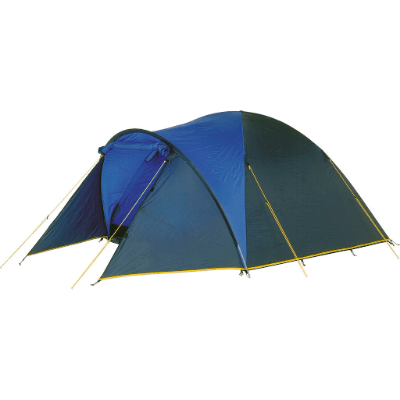
- Light Nylon Tent Fabric: Lightweight nylon tent fabric with a single-sided coating generally lasts around 100 to 300 days.
- Nylon Coated on Both Sides: Higher-quality nylon tents coated with silicone on both sides give them a lifespan of approximately 150 to 500 days.
Nylon tents usually feature a silicone coating, while polyester tents are often coated with polyurethane. Because silicone is highly resistant to UV radiation, nylon tents generally outlast their polyester counterparts.
Cotton Tents
The natural fiber cotton is breathable. This ensures a pleasant climate in the tent when it is hot. A well-maintained cotton tent can get very old. However, cotton flexes its muscles in warm and dry areas.
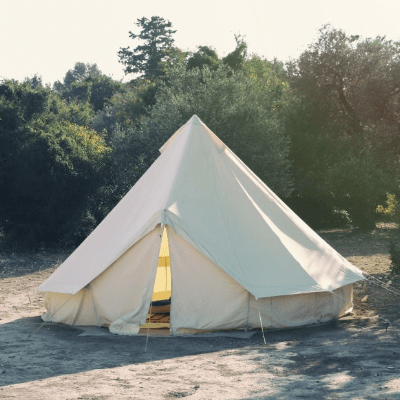
- Light Cotton Fabric: Small cotton tents made from lightweight cotton fabric (120-200 grams per square meter) last around 100 to 300 days.
- Medium-Weight Cotton Fabric: Large cotton tents crafted from medium-weight fabric (200-260 g/m²) have a lifespan of approximately 150 to 350 days.
- Heavy Cotton Fabric: Group tents made from heavy cotton fabric (260-400 g/m²) can last anywhere from 200 to 500 days.
Awnings for Campers & RVs
Awnings are made from heavy, durable materials, and they come in three main types: lightweight, seasonal, and year-round awnings. Since awnings remain in the same location for extended periods, they must be robust to withstand the elements.
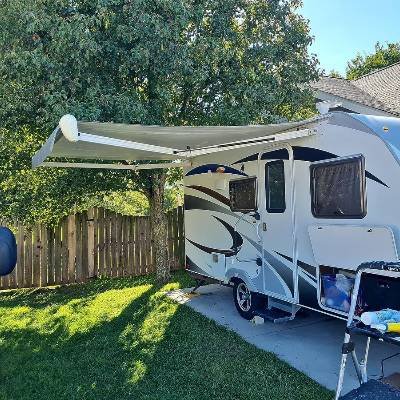
- Lightweight Awnings: These awnings are designed for frequent assembly and disassembly. Made primarily of lightweight materials like polyester with a PU coating, they have a lifespan of around 100 to 400 days, similar to camping tents.
- Seasonal Awnings: Seasonal awnings can be set up as a single unit for extended periods and are ideal for use from spring to autumn. They are made from PVC-coated polyester, Isacryl, or TenCate All Season, lasting 300 to 1,500 days.
- Year-Round Awnings: Suitable for all seasons, year-round awnings are resistant to moisture and can support heavy snow loads in winter. With proper care, they can last approximately around 500 to 2,500 days.
- What About Air Awnings?: These practical inflatable tents are optimized for frequent pitching and are generally categorized as lightweight awnings. A well-maintained air awning can last anywhere from 5 to 10 years.
How Long Will My Tent Last?
The lifespan of a tent depends on its material, quality of workmanship, and how it’s used. We’ve seen poorly made tents turn into makeshift stalactite caves on the first day due to inadequate seam construction or lack of bracing during storms. Conversely, some tents loyally accompany their owners for up to 30 years—usually higher-priced models that are well cared for. There is no guaranteed lifespan for any tent. I emphasize the importance of taking good care of your tent and mobile accommodation.
Dangers to Your Tent: This Shortens Its Lifespan
Did you know that the sun is the greatest danger to your tent? Aggressive UV radiation attacks the sensitive coating of the tent fabric. These dangers lurk on the campsite and in the great outdoors:
- UV radiation
- Storm
- water
- pollution
- Dangerous environments
- People & animals
Fortunately, for virtually any hazard, there are effective countermeasures that can protect your tent.
UV Radiation Causes the Canvas to Age
Tents get something like sunburn in the sun: The UV radiation is so rich in energy that it breaks up molecular bonds in the tent material! The polyurethane coating of polyester tents is particularly hard hit. The result: the canvas will fade and become brittle over time. At some point, it feels like paper and tears at the slightest load. With cheap tents of poor quality, this happens after just a few weeks of use.
In contrast, nylon offers better resistance to UV radiation due to its silicone coating, which provides added protection. Natural fiber cotton, on the other hand, handles sun exposure exceptionally well, making cotton tents an excellent choice for sunny environments.
Storm Tears the Cloth and Breaks Poles
A storm can seriously damage your tent. The strong wind bends and breaks tent poles easily. However, fiberglass tent poles are susceptible to this. Fortunately, tent poles are easy to repair. The wind is also a threat to the canvas. If the fabric tears, it has to be repaired quickly because the tent is no longer waterproof. However, the fabric only tears if it has already been damaged by UV radiation or a sharp object.
Something else happens much more often: In a storm, the seams get too much tension and leak. I therefore recommend that you always take a tube of seam sealer with you on your tour. You can protect your tent from the wind by correctly tensioning it.
Mold Loves Moisture
Even though your tent is rainproof, water can damage it. If the tent is damp for a long time, the tent cloth can get moldy. Cotton is badly affected. The black spots can no longer be removed! That is why you should always dry your tent before packing it up.
Polyester tents are mold resistant. But there is another danger here: the PU coating is susceptible to hydrolysis. When wet, the coating becomes brittle over time. Then the tent can no longer be used. The good news is you can protect your tent from moisture. From these instructions, you will learn how to properly waterproof your tent.
A Dirty Tent is a Wet Tent
Why does a dirty tent tend to stay wet more often? The answer is simple: dirt can damage the tent fabric over time. For instance, sand can wear down the coating on the tent floor, while acidic bird droppings can corrode the flysheet’s protective coating. Additionally, mold thrives in the presence of mud, food stains, and drink spills. To prolong the life of your tent, remove stains as soon as possible.
Another important tip: avoid applying sunscreen or insect repellent inside the tent. These sprays can break down the waterproofing treatment that keeps your tent dry, requiring you to re-impregnate it. Insect repellent should also be kept away from your tent fabric to prevent damage.
Dry Grass Pokes Holes in the Ground
Setting up your tent in the wrong location can quickly ruin your camping experience. Old tent pegs and sharp branches can easily tear holes in the tent floor, and during the next heavy downpour, you may find your tent flooding from below.
Are you aware of the dangers lurking beneath your tent? It’s not just bales of straw; thick, hard stubble from fields or mown meadows can resemble large needles, leading to leaks in the tent floor. To protect against this, consider using a tent mat.
Clumsy People and Hungry Animals
Both bipeds and four-legged friends can pose various risks to your tent. People often have poor visibility in the dark and may trip over your tent, resulting in a loud “thump” and loosened guy ropes. If this happens during a storm, it could lead to significant damage. A simple yet effective solution is to secure your guy ropes with small solar lanterns to enhance visibility.
Four-legged friends, on the other hand, are almost always hungry and possess keen noses. Leaving food out in your tent can attract them, leading to potential damage. Animals like cats, dogs, and even foxes can scratch the tent walls with their claws, while cats might be tempted to play with zippers and guy lines. To mitigate this risk, pack a spare storm line for emergencies.
Conclusion
As we have seen, the lifespan of a good tent depends on various factors, including material, quality of craftsmanship, and maintenance. While lightweight tents usually last between 100 to 300 days, sturdier options can endure for several years with proper care. Regular cleaning, appropriate storage, and mindful usage can significantly extend your tent’s life—often doubling it. Ultimately, investing in a quality tent and taking the time to maintain it can lead to years of enjoyable camping experiences.




